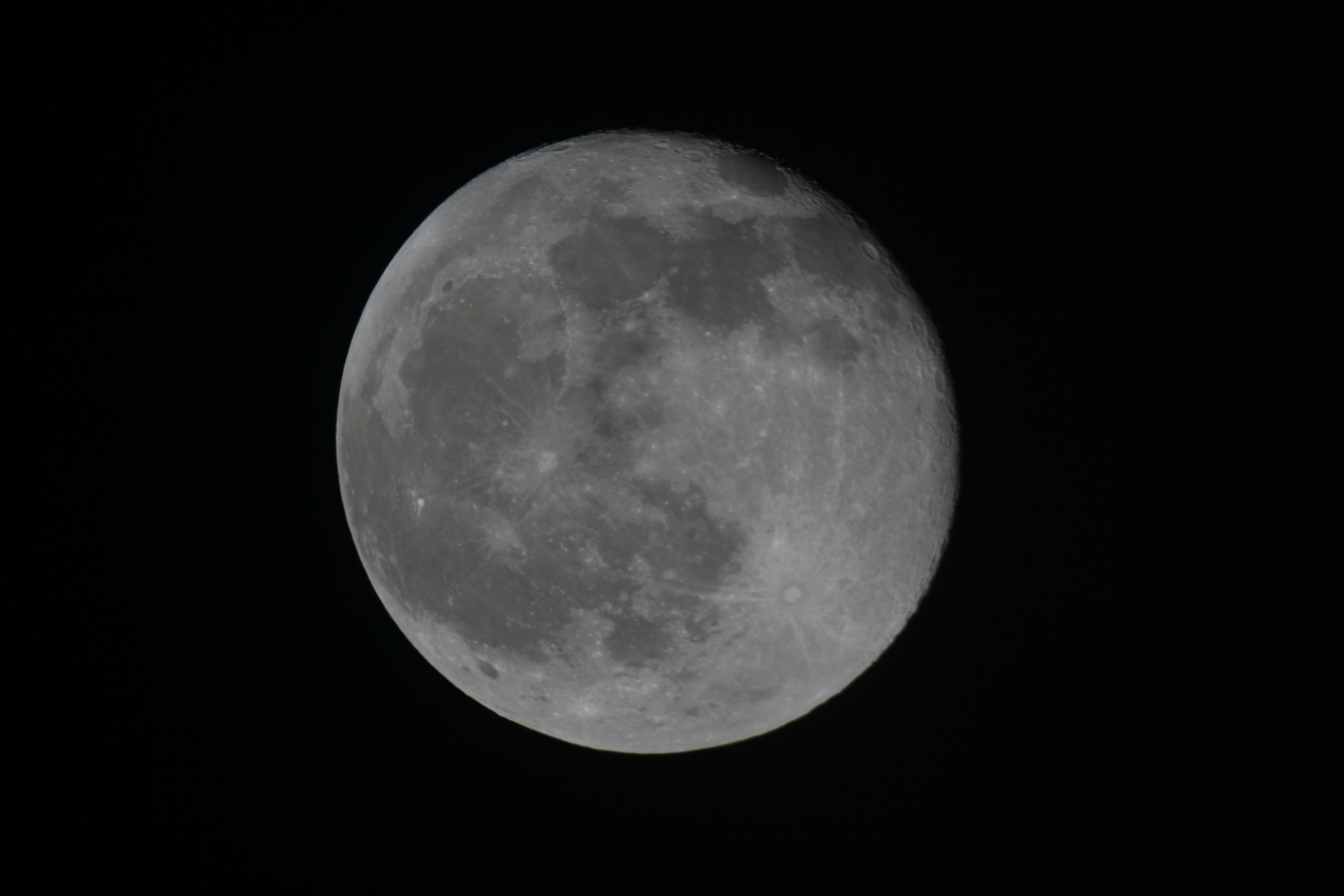Moon

Image copyright jonsay.co.uk
Our moon is the fifth largest satellite in this solar system with a diameter 3474 kilometers. It is roughly 1/81 the mass of Earth. The moons orbit around Earth is responsible for much of the weather control of our planet. Without the moon we would not have tides and ocean currents as we do which are a major part of our weather system.
The origins of our Moon are believed to have been from a collision in the very early beginnings of the formation of our Earth from an giant asteroid. It is thought that the asteroid and part of the Earths substance became one in the Moon.
The Moons surface tells us a great deal about the early life of our Solar System. Due to the virtually zero atmosphere the impacts and volcanic activity of the Moon do not get washed or blown away. The only way a feature can disappear now is if a new impact destroys an original feature.
When we look at the Moon we see what appears to be a face but is actually from lava flows over a billion years ago. When the Moon still had a relatively hot core that expanded to just under the surface, large asteroidal impacts would crack the surface and allow lava to flow. Due to the large iron content of the lava it is not as reflective as the original surface and so is darker to our sight.
| Moon in other languages:- |
| Cebuano: | bulan, buwan |
| Chinese: | yuèqiú 月球 |
| French: | f lune |
| German: | m mond |
| Greek: | n φεγγάρι |
| Indonesian: | bulan |
| Italian: | f luna |
| Japanese: | tsuki 月 |
| Nederlands: | c maan |
| Norwegian: | m måne |
| Polish: | m msiężyc |
| Portuguese: | f lua |
| Spanish: | f luna |
| Tagalog: | buwan |
| Turkish: | ay |